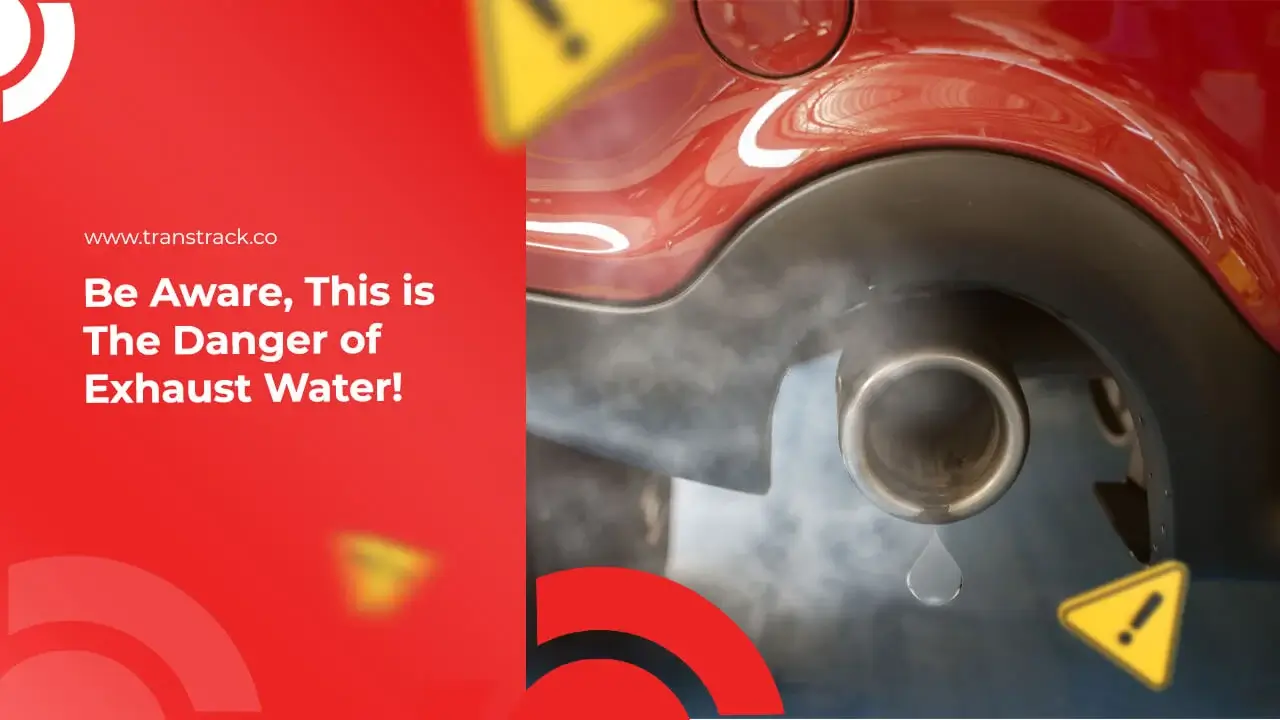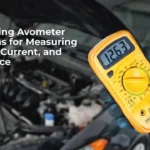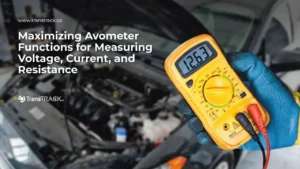Be Aware, This is The Danger of Car Exhaust Water!
Posted on March 15, 2024 by Nur Wachda Mihmidati

Have you ever noticed water droplets coming out of your car’s exhaust? This phenomenon is often confusing for many drivers, but it actually has a pretty simple explanation. When you see your car “spewing” water from the exhaust, you might wonder what’s really going on inside your engine. This article will explain the phenomenon and why exactly your car’s exhaust is leaking water.
As you drive down the road, you may have noticed water vapor coming out of your car’s exhaust during cold weather. Is this a reason for concern? Or maybe there’s something you need to know about your car’s condition? Let’s dig deeper and find the answer through the following article TransTRACK!
Causes of exhaust water discharge
The cause of the car exhaust emitting water is usually related to the condensation process that occurs in the exhaust system. When a car engine is running, the hot exhaust gases contain water vapor. When these exhaust gases pass through the cooler exhaust pipe, a temperature change occurs that causes the water vapor in the gas to condense and settle inside the exhaust system. As a result, water comes out of the exhaust in the form of water droplets or water vapor when the vehicle stops or when the exhaust temperature drops. This is a natural phenomenon and usually does not cause any problems to the vehicle. Here are more details:
Condensation process in the exhaust pipe
When hot car exhaust gases from a vehicle engine encounter the cooler surface of the exhaust pipe, the water vapor contained in the gases can condense and form water droplets inside the exhaust system. This occurs due to the temperature difference between the hot exhaust gases and the cooler surface of the exhaust pipe.
Condensation process on the exhaust pipe
This process occurs when exhaust gases containing water vapor meet the cooler surface of the exhaust pipe. The water vapor then condenses and forms water droplets inside the exhaust system. This is a natural phenomenon that occurs due to the temperature difference between the hot exhaust gas and the cooler exhaust pipe.
Effects of the converter catalyst
The converter catalyst is a component in the exhaust system that functions to convert toxic exhaust gases, such as carbon monoxide (CO), hydrocarbons (HC), and nitrogen oxides (NOx), into more environmentally friendly gases, such as carbon dioxide (CO2), water (H2O), and nitrogen (N2). The effect of the converter catalyst is to reduce toxic gas emissions from motor vehicles, thus helping to reduce air pollution.
Effects of car washing
Regular car washing is important to maintain the appearance and cleanliness of the vehicle. However, the consequences of washing your car the wrong way or using unsuitable products can include:
- Removing the protective coating on the car’s paint.
- Damages exterior trim and rubber seals.
- Leaves water streaks on the paint surface.
Damage to the piston
- Damage to the piston can be caused by a variety of factors, including:
- Overheating of the engine.
- Lack of adequate lubrication.
- Poor fuel usage.
- Detonation in the combustion chamber.
- Combustion imperfections.
- Damage to the piston can lead to poor engine performance, power loss, and even engine failure if not properly addressed.
Is water coming out of the car exhaust dangerous?
Car exhausts leaking water is a common phenomenon and is usually harmless. This happens due to the condensation process in the exhaust system. When hot exhaust gases containing water vapor pass through the cooler exhaust pipe, the water vapor condenses and settles inside the exhaust system. When the vehicle stops or the exhaust temperature drops, this water then exits the exhaust in the form of water droplets or water vapor.
This is a normal process and is not harmful to the vehicle. However, if there is an unusual amount of water or it occurs in very large quantities, it may indicate a problem with the engine, such as a coolant leak or other issue that needs to be addressed immediately. Additionally, if the exhaust is leaking water along with an abnormal color or smell, it could also be a sign of a problem that needs to be further examined.
What happens exactly
- When a vehicle engine is running, the hot exhaust gases contain water vapor. As the exhaust gas passes through the cooler exhaust pipe, a temperature change occurs that causes the water vapor in the gas to condense and settle in the exhaust system.
- When the vehicle stops or the exhaust temperature drops, the water that has settled inside the exhaust then comes out in the form of water droplets or water vapor.
This is normal
- Exhausts emit water as a result of a natural condensation process. This is a common phenomenon in vehicles, especially in cold weather conditions or when the car has just been started after a period of inactivity.
- Overall, exhaust discharge is considered normal and nothing to worry about unless it occurs in unusual amounts or is accompanied by other symptoms such as abnormal color or odor, which may signal a problem with the vehicle that needs to be addressed immediately.
Always Be Alert!
It is always important to stay alert to the condition of your vehicle. While a tailpipe leaking water is generally not a serious problem, it is good wisdom to pay attention to any unusual changes or other symptoms that appear on your vehicle. It can help you detect potential problems early and prevent greater damage or danger later on.
Some steps you can take to stay aware of your vehicle’s condition include:
- Performing regular routine maintenance, including periodic inspections of the muffler and exhaust system.
- Noticing changes in vehicle behavior, such as unusual noises, abnormal vibrations, or a decrease in engine performance.
- Listen for symptoms such as unusual odor or color of exhaust gas.
- Observe for signs of leaks or damage around the muffler or other parts of the exhaust system.
- Take your vehicle to a repair shop if you feel anything unusual or if any warning lights come on inside the dashboard.
By staying alert and proactive to the condition of your vehicle, you can help ensure the safety and optimal performance of your vehicle.
In managing exhaust conditions and ensuring your vehicle stays in top condition, it is important to have a reliable vehicle maintenance system. With TransTRACK Vehicle Maintenance System, you can easily track routine maintenance, monitor engine health, and get early warnings of potential problems.
Don’t let problems with the exhaust or other parts of your vehicle be an obstacle in your journey. Be smart and use TransTRACK to keep your vehicle safe, efficient and reliable. Start managing your vehicle maintenance properly today for a longer life and a more comfortable ride.
With TransTRACK, you can ensure that your vehicle is always ready to drive safely and smoothly.
Topic :
vehicle enginevehicle maintenance
Recommended Articles

 Bahasa Indonesia
Bahasa Indonesia








